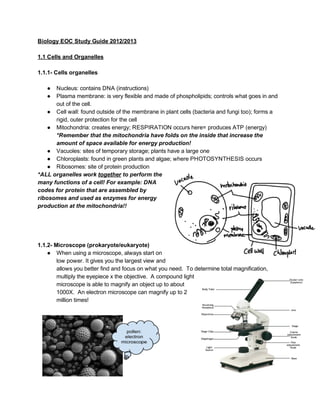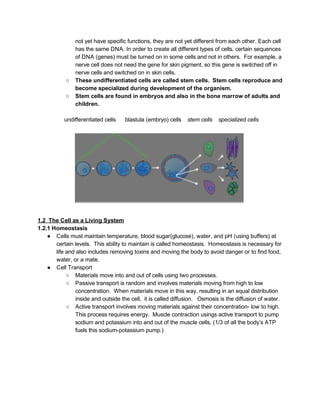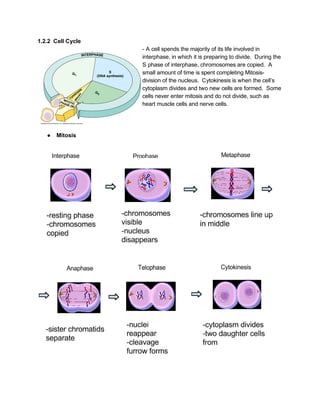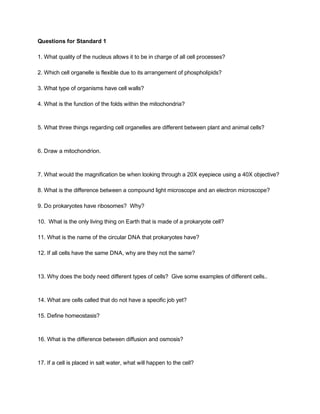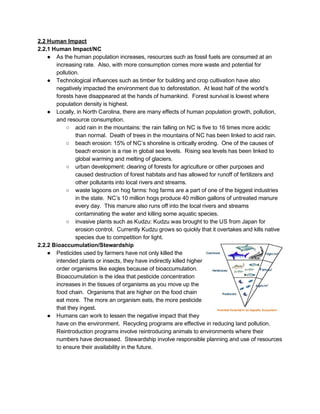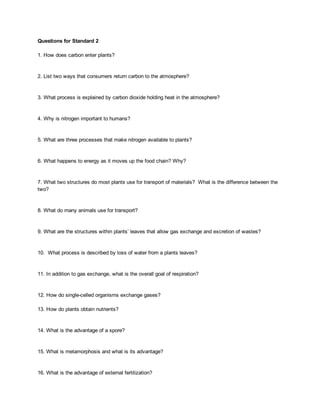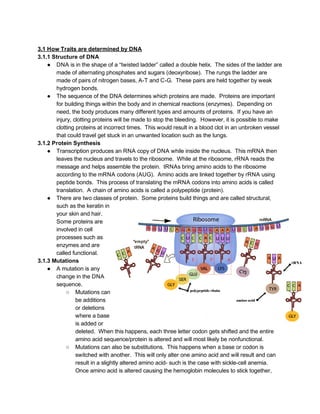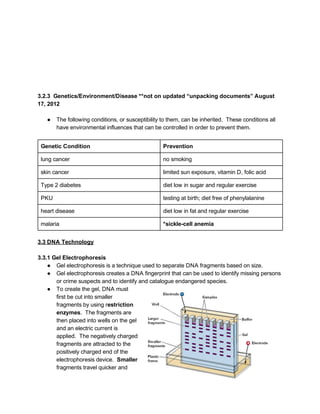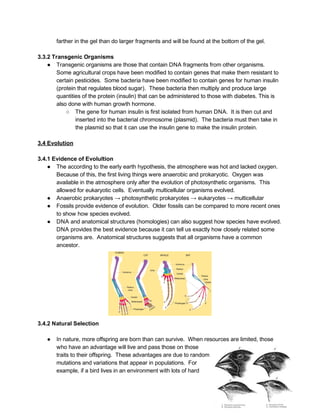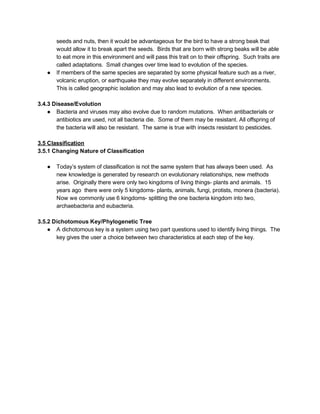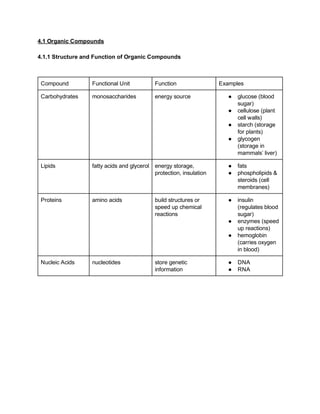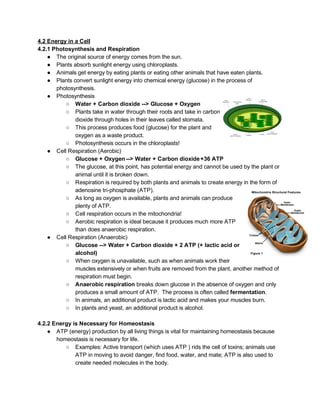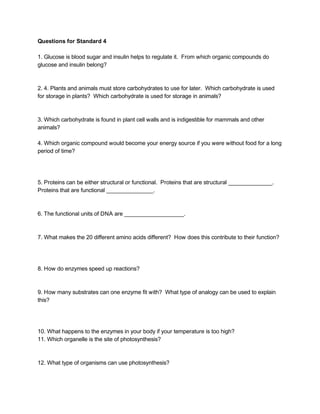This Biology EOC study guide covers several topics:
1) Cell organelles such as the nucleus, plasma membrane, mitochondria, chloroplasts, and their functions. It also discusses prokaryotic and eukaryotic cells.
2) Homeostasis and transport processes in cells, including diffusion, osmosis, and active transport. The cell cycle and mitosis are also described.
3) Ecology topics like the carbon and nitrogen cycles, energy flow through ecosystems in the form of energy pyramids, and life functions of plants and animals like transport and gas exchange.
